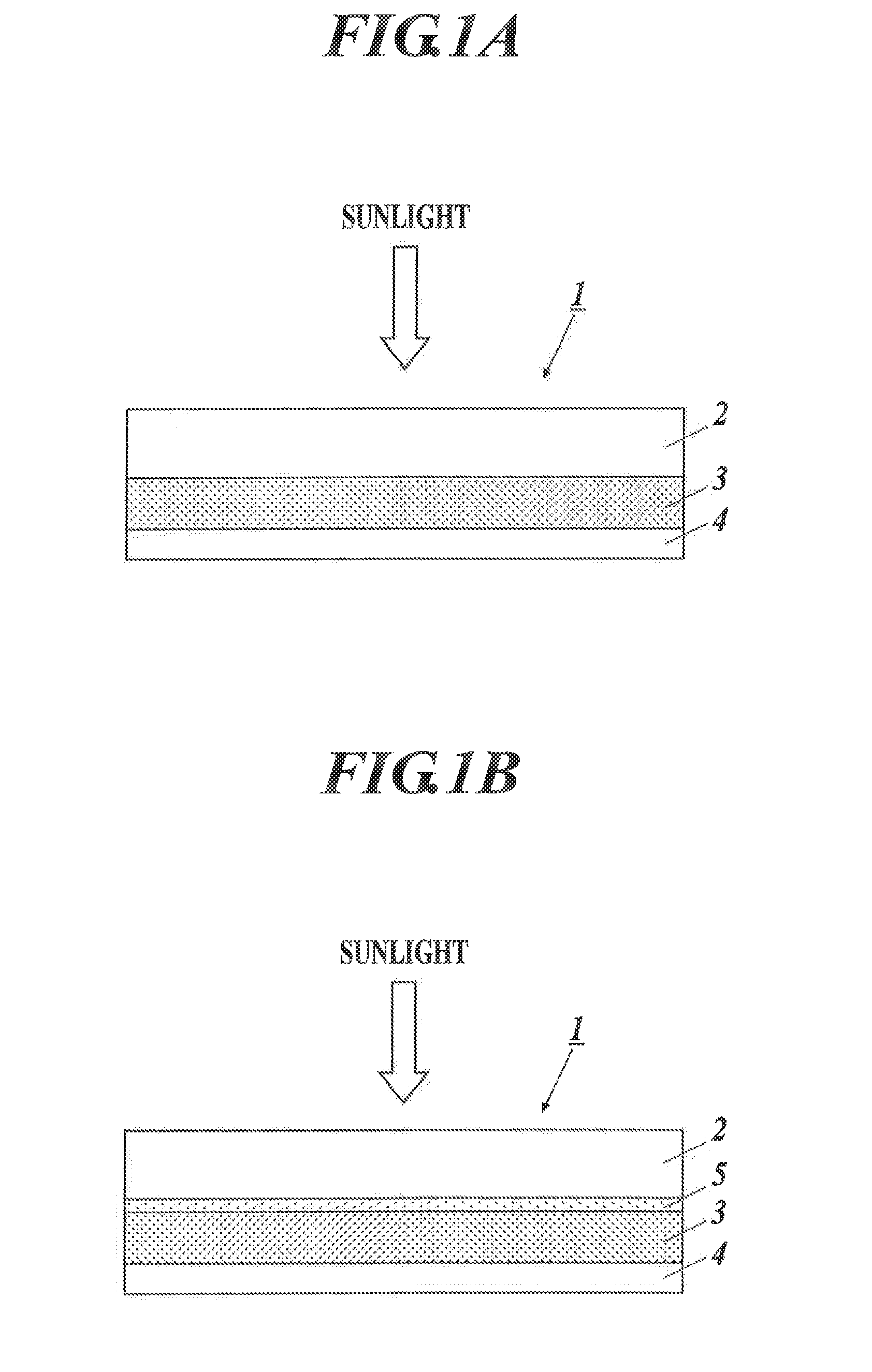Film mirror for reflecting sunlight and reflective device for solar thermal power generation
- Summary
- Abstract
- Description
- Claims
- Application Information
AI Technical Summary
Benefits of technology
Problems solved by technology
Method used
Image
Examples
example 1
Example 1
Preparation of Film Mirror for Reflecting Sun light
Preparation of Film Mirror 1: Comparative Example
Preparation of Polymer Film Substrate 1
[0142]A biaxially oriented polyester film (polyethylene terephthalate film) having a thickness of 60 μm was used as a polymer film substrate 1.
(Preparation of Silver Reflective Layer Coating Liquid 1 Containing Silver Complex Compound)
[0143]In a 500 ml Schlenk flask equipped with a stirrer, 2-ethylhexylammonium 2-ethylcabamate (referred to as Compound 1 in Table 1) (65.0 g, 215 mmol) as an ammonium carbamate compound was dissolved in 2-propanpl (150.0 g), and then silver oxide (20.0 g, 86.2 mmol) as a silver compound was added to react at room temperature. The reaction mixture, which was initially black suspension, faded gradually into a transparent solution as the reaction proceeded with the formation of a silver complex compound. Two hours later, the solution turned completely colorless and transparent. To this solution, 2-hydrox...
example 2
Preparation of Reflective Device for Solar Thermal Power Generation
[0174]An acrylic adhesive S-dine (™) ™7851 (manufactured by Sekisui Chemical Co., Ltd.) was applied onto the surface opposite to the sunlight incident surface of each film mirror in an amount such that the thickness of coating became 5 μm to form an adhesive layer. The adhesive layer was then bonded to an aluminum support of 1 mm thickness to prepare a reflective device for solar thermal power generation.
(Evaluation of Reflective Device for Solar Thermal Power Generation)
[0175]Regular reflectance, abrasion resistance, weather resistance and durability properties in a variety of temperature and humidity environments were evaluated in the same manner as in Example 1. The results show that the reflective devices for solar thermal power generation of the present invention have superior properties compared with the comparative examples.
PUM
 Login to View More
Login to View More Abstract
Description
Claims
Application Information
 Login to View More
Login to View More - R&D
- Intellectual Property
- Life Sciences
- Materials
- Tech Scout
- Unparalleled Data Quality
- Higher Quality Content
- 60% Fewer Hallucinations
Browse by: Latest US Patents, China's latest patents, Technical Efficacy Thesaurus, Application Domain, Technology Topic, Popular Technical Reports.
© 2025 PatSnap. All rights reserved.Legal|Privacy policy|Modern Slavery Act Transparency Statement|Sitemap|About US| Contact US: help@patsnap.com



